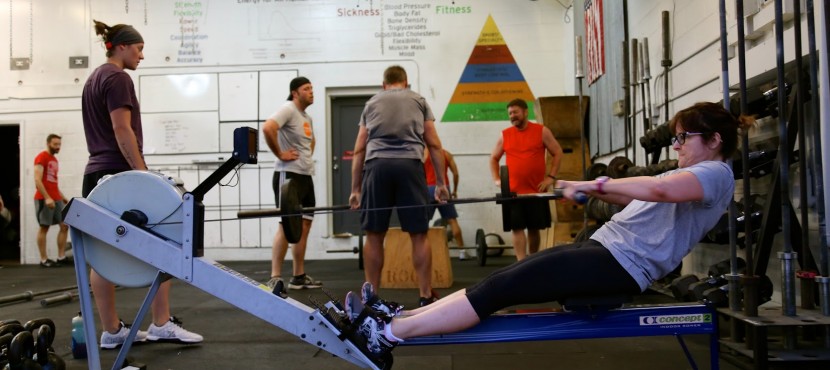Rowing: Tips and Tricks to Perfect Your Stroke



So now that you CrossFit, gone are the days of the elliptical machine, Stairmaster and treadmill, right?
CrossFit workouts provide an ample amount of cardio options for your sweating pleasure: Think running, air-dyne biking, burpees, double-unders and rowing.
Functional movements that can challenge both your aerobic and anaerobic capacity, depending on the workout.
Anyone who has kept up with the CrossFit Games over the past couple years may remember one workout in particular that the top athletes from around the world were commissioned to complete: a half-marathon row (21,097 meters to be exact).
Top contenders, Samanatha Briggs, for the women, and Jason Khalipa, for the men, completed their rows in 1:27 hours, and 1:18 hours, respectively.
There is no doubt that these two athletes’ endurance, technique and skill is what won the event for them.
While here at CrossFit Central, we can most certainly assure you that you will not be seeing a “Half-Marathon Row” written on the whiteboard (anytime), there is no doubt that proper technique, form and skill on the ‘ski ergs’ can make all the difference in the world when it comes to your speed and efficiency in your warm-ups and workouts.
Here are a few basic tips and tricks to keep in mind when you hop on that rowing seat:
Got it?
If not, no worries! Here’s a few more tidbits, courtesy of the makers of our rowing machines themselves, Concept 2:
Damper Setting 101
What ‘level’ or number should you set the damper dial on?
Many people confuse damper setting with intensity level or resistance. Instead, the intensity of your workout is controlled by how much you use your legs, back and arms to move the handle—in other words, how hard you pull. This is true regardless of where the damper lever is set: the harder you pull, the more resistance you will feel. Because indoor rowers use wind resistance (which is generated by the spinning flywheel), the faster you get the wheel spinning, the more resistance there will be.
Think about rowing on the water. Regardless of whether you are rowing in a sleek racing shell, or in a big, slow row boat, you will need to increase your intensity and apply more force to make either boat go faster. The difference is in how it feels to make the different boats go fast. Making a sleek boat go fast requires you to apply your force more quickly. Making the slow boat go fast also requires more force, but the speed at which you apply the force will be slower over the course of the rowing stroke.
With a little experimentation, you will find a damper setting and drag factor that work best for you. Concept2 recommends starting out on a damper setting of 3–5. Really focus on technique, and as you improve, you may find that a lower damper setting gives you the best workout and results. Very rarely do any of us train at a damper higher than a 6 or 7.
Resist setting the damper lever too high; this can exhaust your muscles before you reap the full cardiovascular benefit rowing provides.
The Rowing Stroke 101: A Breakdown
The rowing stroke can be divided into two parts: The drive and the recovery.
There is a coordinated movement pattern that happens, built upon the following positions and phases:
“The Drive” (Phase 1)
“The Finish” (Position 1)
“The Recovery” (Phase 2)
“The Catch” (Position 2)
Breathing 101
Create a breathing pattern and stick with it throughout your row. This will supply regular oxygen to your muscles so they can function optimally, and it can also help you increase the intensity of your workout.
Warm-Up AND Cool-Down 101
Rowing can be a great way to warm up when you hit the gym to get some blood flowing, AS WELL AS cool down after a tough workout to flush some lactic acid from your muscles. Typically a 500-meter row will be equivalent to a 400-meter run. Mix in some stretching pre and post-workout and your body will be nice and loose.